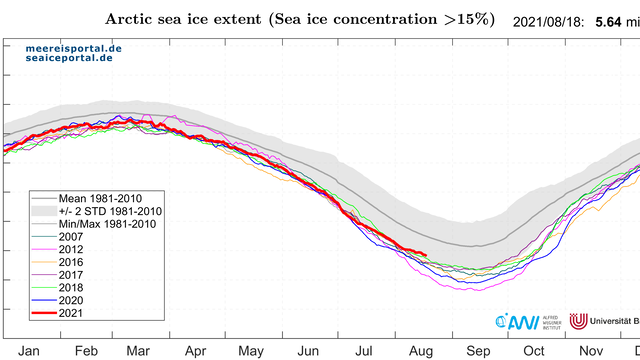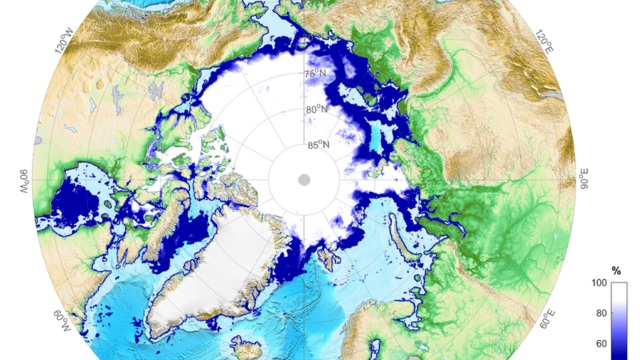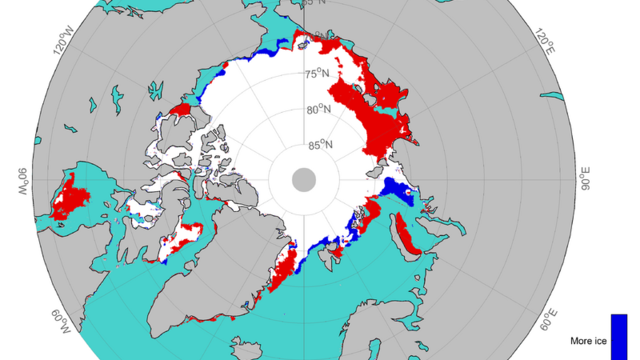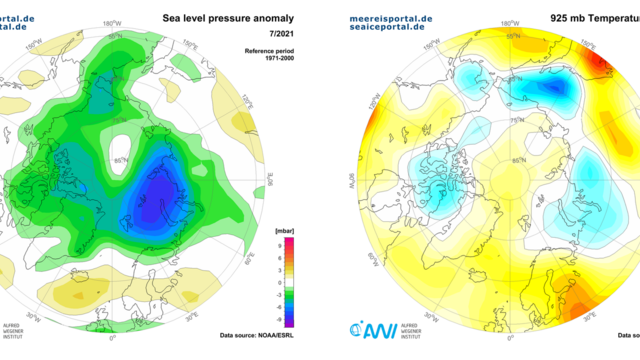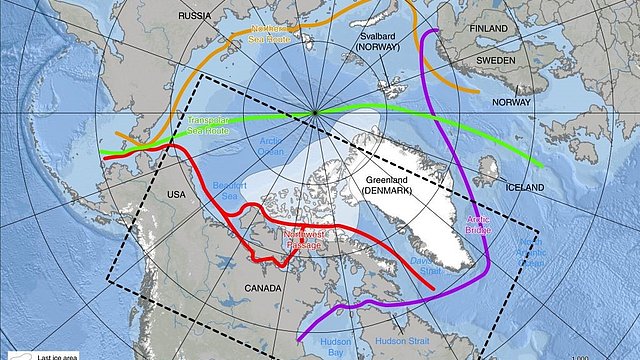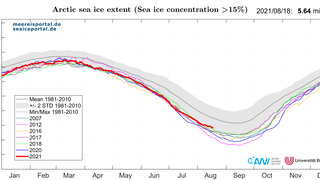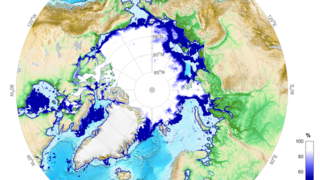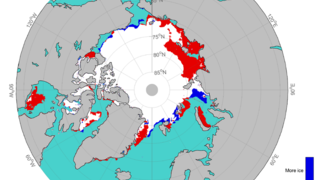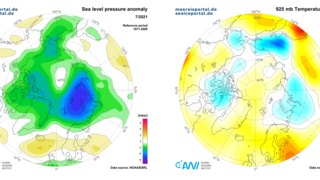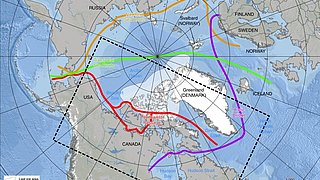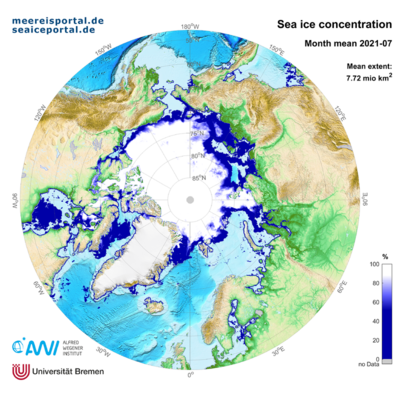The seasonal Arctic sea-ice retreat was quite rapid in the first week of July but slowed during the rest of the month (see Fig.1). The mean extent for July 2021 was 7.72 million km2. As such, it was ca. 454,000 km2 above the record low from 2020, and 1.68 million km2 below the average extent for the years 1981 to 2010, making it the sixth-lowest in the time series evaluated here. The linear decline in sea-ice extent through 2021 is roughly 8% per decade, equivalent to 76,500 km2 per year. The cumulative July ice loss in 43 years of satellite observation is 2.6 million km2 – an area roughly the size of Algeria – calculated on the basis of the difference between the values for 2021 and 1979. The rapid ice loss in the Laptev Sea at the start of the melting season has now slowed, but the extent remains significantly below average in both the Laptev Sea and East Siberian Sea (see Fig. 3).
In July, low-pressure areas continued to dominate the Arctic Ocean. The mean monthly atmospheric pressure was below the long-term average over most parts of the Arctic Ocean (see Fig. 4, left). This produced generally very cloudy conditions. The air temperatures at the 925-millibar level were within roughly 2°C above the long-term average over almost the entire Arctic Ocean (Fig. 4, right).
Routes through the Arctic
In recent years, the Northeast Passage has been ice-free or virtually ice-free along the Russian coast, which has led to significant commercial shipping (generally escorted by ice-breakers). This year the situation is different: while the sea ice in the Laptev Sea began retreating a few weeks ago, the coast of the Kara Sea is still covered with ice. In the East Siberian Sea, the ice near the coast has also persisted. It remains to be seen whether these areas will be ice-free by the end of the summer (source: NSIDC).
The southern section of the Northwest Passage through the Canadian Arctic Archipelago (Fig. 5) is still icebound and unlikely to open to any significant extent this year. However, according to a recent study published in Nature Climate Change (see here), it is likely that the Passage will increasingly be open in summer if temperatures continue to rise. The study investigated the ice conditions in various warming scenarios. Based on climate-model projections, the authors concluded, with 100% probability, that with global warm-ing of 2°C (the goal set in the Paris Agreement), by the end of the summer the Northwest Passage will be passable, at least for a time. One caveat: current climate models don’t necessarily reflect those processes that lead to thick ice accumulating as a result of wind and currents that drive ice from the Arctic Ocean into the waterways of the Archipelago.
Contacts
Questions?
Contact us via E-Mail or our contact form.
Graphics
